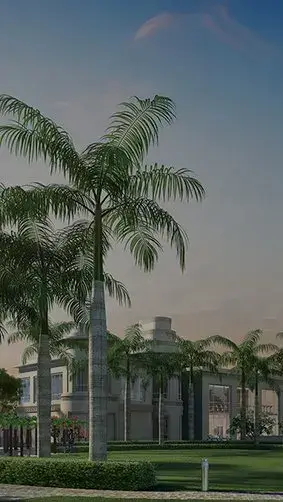Malls in India have changed a lot over the past 20 years. What started as small clusters of stores selling branded products, with a few restaurants and coffee shops in the corner, has now grown into much larger spaces. Today, malls offer a wide range of shopping options, substantial food courts with different types of food, and various entertainment activities like multi-screen cinemas. Before we go further, let’s take a quick look at how shopping malls evolved in India.
The Evolution of Shopping Malls in India
The idea of shopping malls in India is relatively new compared to countries like the U.S. In India, the first mall was Ansal Plaza in Delhi, which opened in 1999, followed by Crossroads in Mumbai and Spencer Plaza in Chennai. After 2003, malls started to appear in big cities like Mumbai, Delhi, Kolkata, Bengaluru, Chennai, Hyderabad, and Pune, as well as in growing cities like Gurugram and Noida. Malls quickly became popular among investors and builders.
From 2011 onwards, malls in India changed a lot. They were no longer just for shopping but also offered entertainment, food courts, restaurants, gaming areas, bars, and even multiplexes for watching movies. People started expecting a complete experience when they visited malls.
Also, the Delhi NCR region saw rapid growth in mall culture. According to the Economic Times, last year, the amount of new retail space in shopping malls increased by 72%. It reached about 5.95 million square feet across eight major cities to meet the growing demand from retailers. In 2023, 11 new shopping malls opened in these top eight cities. Together, they added 5,948,395 square feet of retail space.
The Resilience of Malls: Adapting to the Rise of Online Shopping
The rise of online shopping in 2014 seemed like a threat to malls. However, people still like to visit malls to see, feel, and experience products before buying. This kept the demand for commercial spaces in malls high, and leasing space in malls became profitable.
But what is the hurdle?
It is significant to manage malls and the changing habits of customers today. Mall managers have to follow specific rules to ensure things run smoothly and provide essential services like parking, safety, and security.
Physical Shopping Is Growing Again Despite the Rise of Online Shopping
The growth of e-commerce and changing customer habits have put a lot of pressure on traditional retail stores. However, instead of fading away, shopping mall centres are transforming into lively spaces to meet the needs of today’s shoppers.
Nowadays, consumers are experience-driven. Modern customers want more than just products – they look for unique experiences. They want convenience, a connection with brands, and values that match their own. To succeed, retailers need to focus on these changing preferences.
Even though online shopping is the new trend, physical shopping is still popular, especially in big cities. Many thought people would shop more online because they are connected digitally. However, customers have returned to small shopping centres and smart shopping malls after the COVID lockdowns.
It’s true that during the lockdowns, some retailers had to close or reduce their stores to save on rent. However, this has changed. Shoppers are now returning to shopping centre malls and markets, and the demand for new commercial space in malls has increased as more retailers open stores again.
Smart Shopping Malls: Digital Revolution and New Trends
According to Cushman & Wakefield, the new retail space supply in smart shopping malls increased 72% last year. About 59.48 lakh square feet of commercial real estate buildings were added across eight major cities. In 2023, 11 new top shopping centres opened to meet the growing demand. Cities like Hyderabad, Pune, and Chennai each have new shopping centres.
Interestingly, no new shopping mall centres were built in Kolkata, but other cities like Bengaluru, Delhi-NCR, and the Mumbai Metropolitan Region added at least one mall each.
Greater use of technology to engage customers
Today’s shoppers compare their experiences with the best they’ve had, raising expectations for retailers. Technology helps retailers keep up and offer engaging experiences both online and in-store.
1. Virtual shopping
Customers still value human interaction while shopping online. Many brands now offer video chats and online consultations, helping shoppers feel more confident in their purchases. Credo Beauty, a skincare brand, saw 21 times higher conversion rates when using virtual shopping than those who shop independently. Virtual consultations also increased the average order value (AOV) by 70%.
2. Endless aisle
In smaller stores, displaying all products can take time and effort. The endless aisle concept allows retailers to show their full online inventory in-store. If a product isn’t available, customers can order it for home delivery. This merges online shopping with physical stores and improves the overall experience.
3. AR/VR technology
Augmented reality (AR) and virtual reality (VR) are available daily in retail. Customers love using immersive technologies like virtual try-ons. Charlotte Tilbury, a beauty brand, uses a virtual mirror that lets customers try makeup without hygiene concerns.
4. Unified shopping experience
Retailers are blending online and in-store experiences to meet customer expectations. Many shoppers now browse online and buy in-store, or vice versa. They also offer services like Buy Online, Pick Up In-Store (BOPIS) and Buy Online, Return In-Store (BORIS).
Having one system to manage inventory across both channels helps retailers create personalised experiences, send email reminders, and manage loyalty programs.
5. Personalised shopping experiences
Customers want more control. They prefer a personalised shopping experience that answers their questions and helps them make the right decision. Stores within malls can use technology like CRM systems, free WiFi, and apps to collect customer data. This information allows retailers to deliver more personalised services.
Malls can also use geofencing technology to send targeted messages to customers’ phones when they are nearby. Starbucks, for example, offers discounts when customers are close to its stores.
What will malls look like in the future?
Mall owners and retailers are working hard to benefit from this revival. Omnichannel retail, where online and in-store shopping work together, will play a key role. Other changes could also bring people back to malls.
In fact, the future of smart shopping malls looks bright. According to a report by JLL India titled “India Retail: Evolving to a New Dawn,” by 2027, the supply of commercial buildings for retail shopping is expected to rise by 43% in seven major cities.
As a retailer, your focus should be on creating better shopping spaces and connecting with customers in a new way. Many developers are expanding into outlet shopping centres and small shopping centres in tier II and III cities. This shift marks the evolution of shopping in India, blending online and traditional shopping.
1. Convenience is key
Appointment-based shopping is becoming more popular. It provides a personalised shopping experience, which customers expect in the future of retail shopping. Neiman Marcus, for example, lets shoppers book in-store appointments or video chats with style experts. Customers can also order items for curbside pickup. This offers a safe and convenient way to shop.
2. In-store pickup
Curbside pickup has boosted online sales for many mall stores. Studies show that customers who pick up their orders in-store are 13% more likely to complete their purchase and spend 23% more than those who choose delivery. To help with this, Brookfield Properties, a major retail real estate company, launched a Curbside Pickup Program to create a safer shopping experience.
3. Contactless payments
Contactless payments are on the rise. A report by Raydiant found that 80% of US consumers used contactless payments in 2021, a number that is likely to grow. What began as a safety measure has become a preferred option because it’s faster and more secure. This includes methods like tap-to-pay cards and mobile wallets like PayPal, Google Pay, and Apple Wallet.
4. New store formats
As retail evolves, mall stores must reinvent themselves to stay relevant. Many brands are testing smaller, experience-driven stores. Pop-up shops and micro-retail spaces are gaining popularity because they are less costly and allow brands to get creative.
These smaller stores focus on creating an experience. For example, LIVELY’s lingerie brand, which started online, opened physical stores as part of its growth. Customers who book fitting appointments online spend 60-80% more than those who walk in. Combining online and offline shopping has helped LIVELY create a successful business model.
These are some of the advantages of shopping malls. They offer numerous benefits that enhance the shipping experience of the customer. Whether you are seeking a variety of products, entertainment, or a safe place to socialise, smart shopping malls have something unique to offer.
A Strategic Approach for Real Estate Investors
The future of shopping malls will undoubtedly evolve as customer preferences shift toward a more blended retail experience. For retail owners, staying relevant will require adopting strategies that align with these changing shopping trends. Here are five key points retail owners should focus on regarding the commercial building:
- Prime Location and Infrastructure: Retail owners should prioritise malls or choose commercial buildings in easily accessible locations with solid infrastructure. Malls in prime areas tend to attract more footfall due to convenience, better transport links, and proximity to residential and commercial hubs.
- Omnichannel Integration: Shoppers today expect a seamless experience across both online and offline channels. Retail owners should invest in technology that allows customers to easily transition from digital browsing to in-store shopping, ensuring a cohesive experience that bridges the gap between e-commerce and physical commercial building.
- Experience-Driven Spaces: The modern shopper is looking for more than just products. Malls should focus on creating experiential zones such as entertainment areas, pop-up events, and interactive digital experiences that encourage visitors to spend more time in the mall.
- Sustainability and Smart Design: With growing awareness about environmental issues, malls that integrate eco-friendly practices, energy-efficient systems, and sustainable designs will attract both tenants and customers who value green initiatives.
- Tenant Mix and Flexibility: To stay competitive, retail owners should carefully curate the mix of tenants, including well-established brands and new and local businesses. They should offer flexible leasing options and spaces for short-term events or pop-up stores for their commercial building. This can help keep the mall or commercial building dynamic and fresh, attracting a diverse range of visitors.
What’s next for malls?
In conclusion, the future of smart shopping malls or Supermarkets in India is poised for an exciting transformation.
As the digital revolution continues to shape consumer behaviour, malls are evolving from traditional retail spaces into dynamic, experience-driven destinations.
The success of shopping malls in the coming years will be defined by the blend of physical and online shopping through omnichannel integration, along with a focus on offering personalised and engaging experiences.
By embracing new trends like virtual shopping, contactless payments, and sustainable designs, malls can continue to thrive, catering to the changing preferences of modern consumers and maintaining their relevance in the fast-paced retail landscape.











